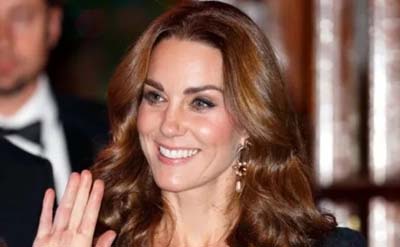
Kate Middleton’s cancer diagnosis – what you thought you knew about cancer might be wrong
Khoo Bee Khim
By now, you might have heard about the health condition of the UK’s Princess of Wales, Kate Middleton. In a video statement released on March 23, the Duchess of Cambridge announced that she has cancer and is in the early stages of chemotherapy.
“In January, I underwent major abdominal surgery in London and at the time, it was thought that my condition was non-cancerous,” said the 42-year-old mother to Princes George and Louis, and Princess Charlotte, and wife to Prince William.

“The surgery was successful. However, tests after the operation found cancer had been present,” she said. “My medical team therefore advised that I should undergo a course of preventative chemotherapy and I am now in the early stages of that treatment.”
Kate, as she is affectionately known, did not reveal the type of cancer she has nor its stage. But her announcement highlights a few things that we may not be aware of about cancer in general. Here’s a look at some of them:

It is not clear if the princess had symptoms or signs that led her to have abdominal surgery in January as she did not elaborate in her video. And it is difficult for doctors watching from the sidelines to comment as cancer is a “complex and multifaceted disease”, said Professor Jimmy So, the head and senior consultant with National University Hospital’s (NUH) Division of General Surgery (Upper Gastrointestinal Surgery), Department of Surgery.
“Many types of cancer do not manifest through clear and distinct symptoms in their early stages, making it challenging to identify the disease without detailed investigations,” said Prof So, who is also the head and senior consultant with National University Cancer Institute, Singapore (NCIS). As a result, “it is not uncommon for cancer to go undetected until surgery, due to the often non-specific nature of cancer symptoms”.
Moreover, there are more than 200 different types of cancer and each affects the body in different ways, he added. “When discussing cancer, especially concerning women, there is a wide spectrum of conditions such as ovarian cancer, cervical cancer and many others.”
In any case, when there are signs such as “persistent symptoms such as unexplained weight loss, loss of appetite, abdominal pain or distension, and change in urinary or bowel habits”, you should always consult a doctor, said Dr Lim Li Min, a consultant with NUH’s Division of Gynaecologic Oncology, Department of Obstetrics and Gynaecology as well as NCIS’s Division of Gynaecologic Oncology.
It is likely that Kate underwent diagnostic scans prior to the surgery as she mentioned “it was thought that my condition was non-cancerous” in her video. And if so, what could have led to the different outcome after her operation?
“Despite advancements in medical imaging and non-invasive diagnostic techniques, they have their limitations in sensitivity and specificity,” said Prof So. For instance, they may not always pick up smaller tumours or differentiate between malignant and benign conditions effectively, he said. “A definitive diagnosis of cancer, including its type and stage, might only be possible through the histopathological examination of tissues obtained during surgery.”
For that reason, surgery isn’t only performed to remove suspected lesions but also to obtain tissue samples for biopsy and examination in a lab. “This process can reveal the presence of cancer cells that were not detected through pre-operative evaluations,” said Prof So.
We tend to associate chemotherapy with crippling nausea, frailty and severe hair loss. That might be the case back in the 70s and 80s when the medications then indiscriminately killed off both healthy and cancerous cells.
Things have certainly improved, thanks to the development of targeted therapies, said Prof So. “A lot of what we do today is aimed at ensuring the patients’ quality of life while effectively combating the cancer,” he said, which means refined chemotherapy drugs with lower side effects, and introducing more personalised treatment plans for patients.
In fact, there are more than 100 chemotherapy medications available today, according to MD Anderson Cancer Centre, along with new ways of delivering the chemo drugs. Advances in anti-nausea medicines also helped. For instance, a class of drugs called serotonin antagonists were introduced in the early 90s that were able to block nausea receptors in the brain.
Kate revealed that she is currently undergoing “preventative chemotherapy” post-surgery or what Prof So referred to as adjuvant therapy, which is meant to “prevent the cancer from relapsing and reduce the chance of recurrence”.
But did you know that chemotherapy can also be used in ways known as chemoprevention? Tamoxifen and raloxifene, for instance, are known chemo drugs for treating breast cancer – and they are also used to lower the risk of breast cancer in high-risk individuals with a strong family history before it even develops.
Chemotherapy may also be used pre-surgery to shrink the tumour and post-surgery to relieve symptoms if the cancer has spread.
